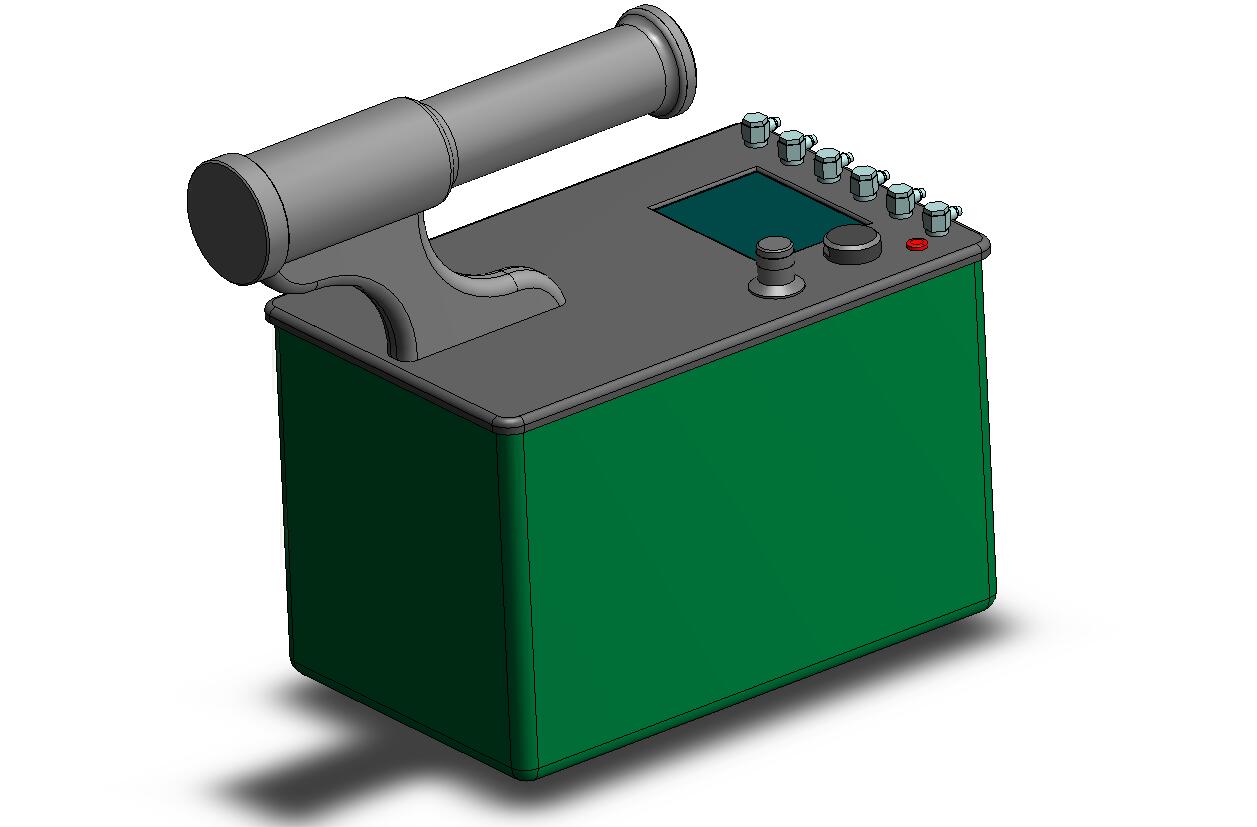
Tritium-In-Air Monitor

Portable Tritium-in-Air-Monitor
Model: 7043
Application
Tyne Engineering’s new handheld Tritium In Air Monitor is designed to meet your
Tritium In Air monitoring requirements as a robust, portable instrument using
all the latest technology.
Introduction of this monitor into your collection of
standard portable devices currently used for
health physics monitoring adds
strength your overall capability for tritium monitoring.
Features
•Better Gamma Compensation
4 chambers are arranged in cruciform. Two chambers are used for measuring and
the other two for compensation.
Less than 10% of the reading change in 10 mR/hr
field.
•High Sensitivity
The total effective volume of the two measuring chambers is 500 cc, with the
ultra-low leakage current amplification circuit.
Also, each chamber has its own
individual amplifier, therefore the Signal-Noise Ratio of analog circuit is
increased.
The sensitivity of instrument is 1uCi/M3 .
•Radon compensation
The analog filter circuit is designed to separate the radon
spike, and the software can
recognize the spike from tritium signal which is a
slow-change signal.
•Ion-Trap is built into the ion chamber
•Noble gas compensation
The inlet/outlet ports of measuring and compensation
chambers are accessible on the front panel.
By interposing a desiccant cartridge
between the ports, the signal from HTO (DTO) can be calculated and displayed by
the micro-processor.
•Gamma measurement
A GM tube is used in the instrument to measure the
gamma field.
•Gamma Purge/Decontamination
All 4 chambers can be heated up by a cartridge heater which is controlled by
the unit.
Description
Compensation for Gamma background is crucial in tritium measurement, since
1mR/Hr of the Gamma field will generate 500 times the ionization generated in
1uCi/M3 of tritium. Tyne designed the cruciform of 4 chambers (250cc each)
in the hand held tritium in air monitor with each chamber connected to an
ultra sensitive electrometer amplifier and filter. All signals pass through the
ADC converter, and the micro-processor calculates and displays the tritium
value.
To cover high ranges of tritium, separated small ion chambers are used. Inputs
like flowmeter (solid-state type) and chamber temperature are monitored by
the micro-processor. The output of the monitor includes analog (0-5V, 4-20mA),
relay alarm
